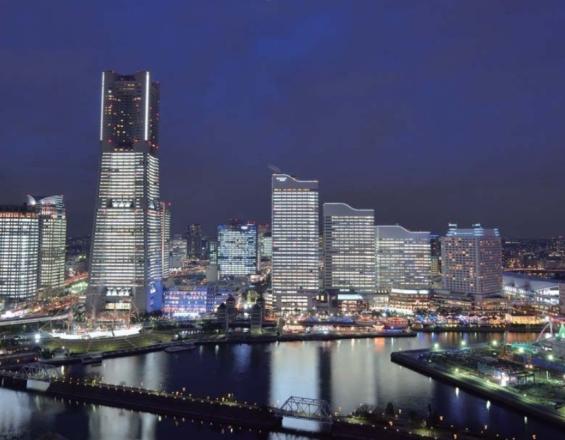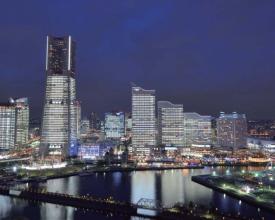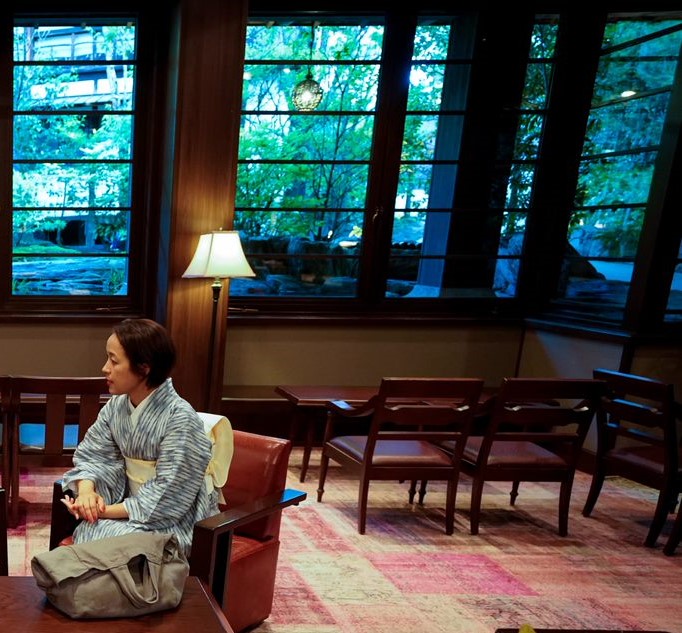
Developing the Waterfront District as a High-Amenity Business and Commercial Center

Minato Mirai 21 is internationally known as a high-amenity business, residential, and historical waterfront district between Yokohama’s major railway terminal and traditional downtown districts. The large site was originally used as part of Yokohama Port’s backyard and shipyard for Japan’s growing international and domestic trade activities in past decades. However, heavy manufacturing and maritime transport and warehouse activities were diminished by the 1960s. In order to reestablish Yokohama’s business and cultural identity, Yokohama City Center Redevelopment Project aimed to integrate two divided commercial and business areas by redeveloping the former backyard and shipyard sites to accommodate 190,000 employees and 10,000 residents, now known as Minato Mirai 21.
Contexte
Challenges addressed
When the Minato Mirai 21 waterfront development plan was proposed, Yokohama faced several urban issues related to rapid population growth, housing shortage, motorization, traffic congestion, and environmental pollution. Its business decline was especially serious for two major reasons. First, Yokohama’s city core, which was seriously damaged during WWII, could not anchor major trading and commercial functions, while major business centers in central Tokyo competitively attracted a large number of major corporations and related medium- and small-size firms. Second, the new commercial development around Yokohama Station could not fully utilize its location advantage in the region due in large part to its physical and functional disintegration with the traditional downtown districts. As a consequence of these two shortages, the wider areas of Yokohama were increasingly transforming into large “bed towns” for an increasing number of commuters to Tokyo.
Emplacement
Traiter
Summary of the process
Large-scale waterfront development is internationally favored by policymakers and is commonly applied to recover urban amenities and stimulate local economies in declining city centers. However, in many cases, policymakers cannot successfully deliver all major projects and materialize their ambitious pictures, due to unexpected macroeconomics impacts and drastic market changes in the long term. For successful waterfront development, city leaders need to persist in taking its long-term initiatives while the economy fluctuates over decades. City’s endeavors also should be directed toward synthesising new and old downtown by improving transportation connectivity and land arrangement to attract more dwellers and visitors. Even after completion of the development, the rejuvenated area requires continuous efforts to conserve livable urban environment through public-private cooperation.
Building Blocks
Public Initiative and Long-term Stewardship to Drive Waterfront Development
In Minato Mirai 21, the City of Yokohama in 1983 commenced three major development projects: land reclamation (73.9ha) by the city; land readjustment (101.8ha) by a semipublic agency for housing; and port facility improvement (77.9ha) by the city and the national government. The actual project delivery has taken much longer than the original schedule. Indeed, many sizable lots in Minato Mirai 21 have long been unfilled with private real estates, due to occasional market shocks and sequential economic downturns across Japan and Asia over the last few decades. To utilize the undeveloped land lots, the city as a project owner allows temporal land use for commercial activities with some fixed lease terms up to 10 years. As a result of this interim arrangement, private building development in the district has advanced, filling more than 80 percent of both permanent use and temporal use land.
Enabling factors
- Cross-cutting department within the city called the Planning and Coordination Department (PCD) which initiated participatory approaches, public-private partnerships, coordination across sectors and departments, and flexible and creative solutions to financial and other issues
-
Project ownership of the city leader and officials
-
Laws and regulations that allow to collectively arrange land for capital projects
Lesson learned
Large-scale waterfront development generally calls for a vast amount of upfront investment in public infrastructure (e.g., land reclamation, new road development, subway construction on the soft ground), whereas the degree of private property investment and development depends on dynamic market climates in the long run. It is essential to establish the long-term stewardship between public and private partners. The city government especially as a major landholder needs to flexibly offer favorable lot sale and/or lease conditions and manage debt service payments during interim periods.
Synthesizing New and Old Downtown by Coordinating Land and Transportation
The district can be conveniently accessed by a variety of transportation systems. The major model option is Minato Mirai Line opened in 2004 which is directly connected to central Tokyo. Two arterials and several link roads enhance transportation connectivity and business cohesiveness across the two central districts of Minato Mirai 21 and their neighboring areas extensively. With the high-quality transit infrastructure and services, a range of business persons, residents, and visitors can get smooth access to and from international and domestic hub facilities in Tokyo (e.g., Haneda and Narita Airports). Furthermore, footbridges, automated walkways, and underground paths form an integrated pedestrian network over the entire district, which is accompanied by intercity bus, water bus, and bicycle-sharing schemes.
Enabling factors
- Cross-cutting department within the city called the Planning and Coordination Department (PCD) which initiated participatory approaches, public-private partnerships, coordination across sectors and departments, and flexible and creative solutions to financial and other issues
- Collaboration of the city and private companies (e.g., railway companies, bus and taxi operators, developers) for intra-city transportation connectivity
Lesson learned
Intra-city transportation connectivity and land use coordination are essential to integrate individual business districts into one competitive economic cluster. To attract international and domestic business travelers, high-quality transit access services to and from airports and high-speed rail stations are vital. The intercity and intracity transit networks should be integrated with pedestrian and bicycle circulation systems across private properties and public facilities. The enlarged seamless transportation system should be supported by transit-oriented land use coordination and urban amenity provisions between new and old districts.
Managing Livable Urban Environment through Public-private Collaboration
The vision and concepts of Minato Mirai 21 have been embodied through public-private collaboration in accordance with the basic agreement of 1988 among landowners and other stakeholders around the central district. Particularly, the agreement enables the landowners to take a strong initiative in formulating local rules for well-balanced development. Also, the agreement requires the obligation of all office developers to provide a certain amount of public open spaces and social activity floors in their properties. It further stipulates detailed standards and rules on building design, such as minimum site scale, height restriction, pedestrian circulations, and setbacks of exterior walls.
Enabling factors
· Operational area management initiatives
· Urban design guidelines
Lesson learned
Building consensus among public and private sectors during the planning stage can facilitate land owners’ strong initiative in formulating local rules for redevelopments and subsequent sustainable area management.
Impacts
Economic Impact: Minato Mirai 21 has successfully attracted international and domestic capital flows as follows: 102,000 workers (in 2015); 1,770 offices (in 2015); and 38 annual International conferences (in 2014). It also contributed to increases in local tax revenues with the amount of JPY 15.8 billion (in Fiscal Year 2014). The City of Yokohama estimates that total private investment in the construction sector is about JPY 2,658.5 billion from 1983 to 2010 and that in the wider business sectors is JPY 1,755.6 billion annually.
Social Impact: The project produced a plentiful amount of public amenities and multi-purpose facilities for a range of cultural and social activities (e.g., Minato Mirai MICE facilities, exhibition halls, event squares, museums, green spaces). In addition, the common spaces and activity floors required across properties have promoted business and community interactions among workers, residents, and visitors.
Environmental Impact: With the concept of “FutureCity” initiatives proposed by the Japanese Government, Minato Mirai 21 accommodates a variety of eco-friendly transportation modes (e.g., public transportation, pedestrian network) and green facilities (e.g., 10 green parks, solar power generators, heat-shielding pavement, greened rooftops/building walls, and open public spaces), which largely contribute to Yokohama’s CO2 emission reduction
Beneficiaries
- Residents of Yokohama city
- Business entities in Minato Mirai 21 area






